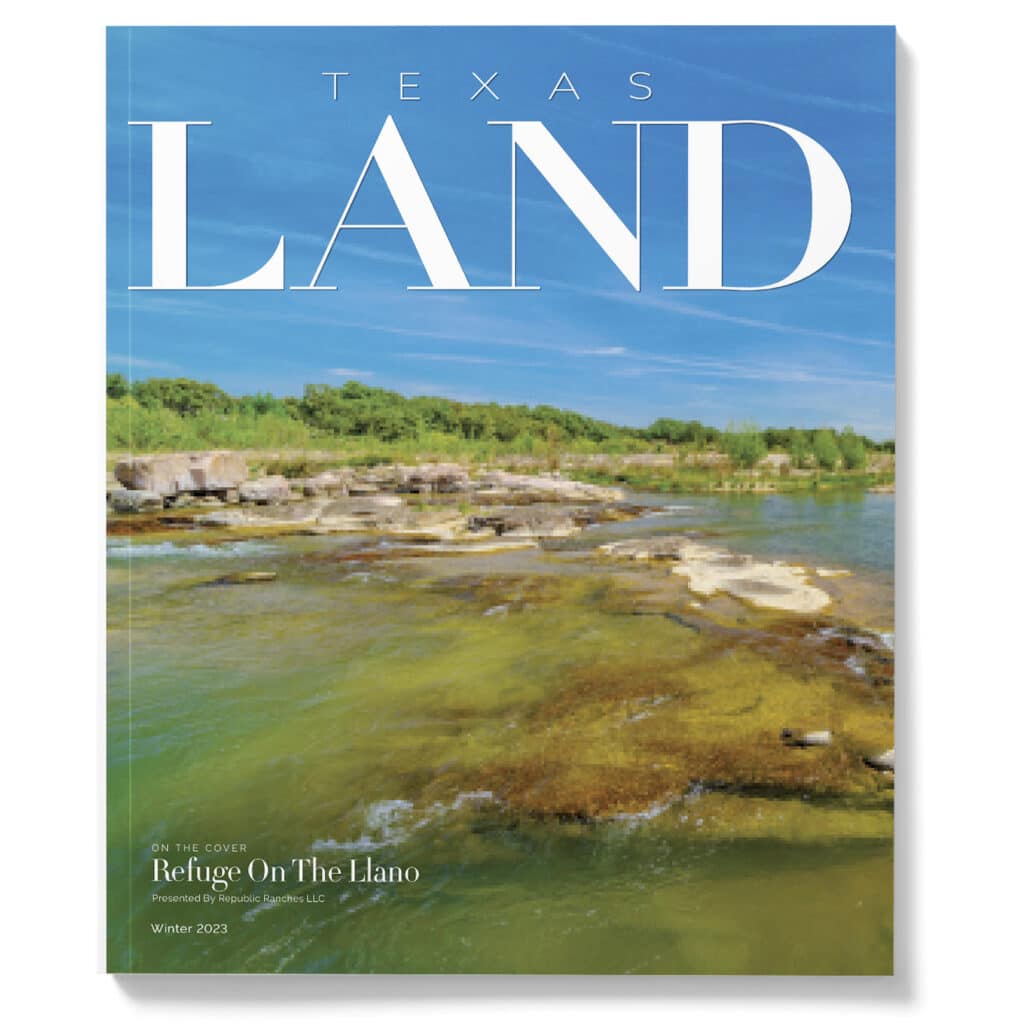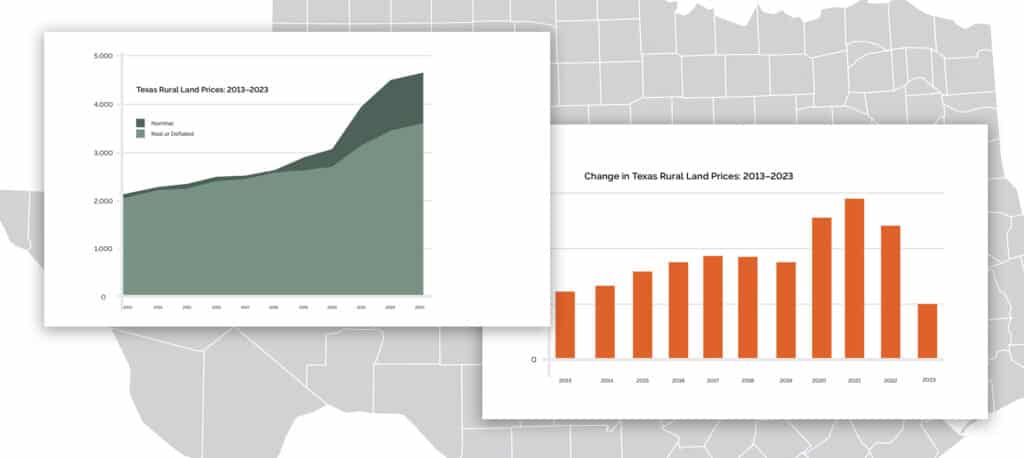
This article is featured in the Winter 2023 issue of Texas LAND magazine. Click here to find out more.
The four-quarter preliminary total number of sales dropped to 3,444 continuing to slide for the sixth straight quarter. This represents a more than 50 percent fall from the third quarter 2022. Final reports may likely soften that reported decline; however, the market continues to cool from the frenzied hot pace seen in 2021 and 2022. According to market participants, buyers focused on good quality properties while lesser quality land remained unsold. That flight to quality land ensured higher overall prices, up 7.03 percent to $4,720 per acre. After adjusting for the impact of inflation, prices increased only 3.13 percent, the smallest percentage increase since the 2020 pandemic year. Preliminary reported total acreage dropped 69 percent to 255,154 acres. Quarterly volume has declined for the sixth straight quarter. The preliminary total dollar volume fell to $1.2 billion, a 67 percent drop. Final reports will increase the number of sales and add to the total dollar volume. Nevertheless these reveal a market returning to more normal levels of activity with moderating price pressures. If more of the lesser quality land had sold, overall price levels may have actually declined.
- Panhandle & South Plains. Markets in this region dominated by farmland saw continued demand for cropland drive prices 11 percent higher than 2022 levels to $1,659 per acre. However, that price represents a retreat from the second quarter price of $1,742 per acre. Preliminary reported volume at 56,993 acres dropped 73 percent the 2022 third quarter level. Total sales at 337 fell 38 percent short of 2022 while total dollar volume dropped 70 percent to $95 million despite a sizable price increase.
- Far West Texas. Sales in this region have returned to lower prices for large properties. At $540 per acre, the price in this region dropped 50 percent from a year earlier. Activity was still meager.
- West Texas. Total acreage exchanged in this market fell 80 short of year-ago transactions. The number of sales slid 54 percent to 416 sales. Still, prices expanded 16 percent to $2,474 per acre. However, that price only exceeded the second quarter price by $4 per acre. At $183 million, total dollar volume dropped 77 percent.
- Northeast Texas. The number of sales declined 50 percent to 1,036 sales while prices inched up a modest 4 percent to $7,883 per acre about half of the 8 percent price increase in the first quarter. Total dollar volume declined 51 percent to $258 million. The total acreage exchanged slipped 53 percent to 32,685.
- Gulf Coast–Brazos Bottom. Despite a reported flight to quality in this region, prices only managed to eke out a 1 percent increase to $9,675 per acre, less than the $10,052 per acre record in the second quarter. Volume dropped 51 percent to 457 sales. Total dollar volume dropped 59 percent to $179 million and total acreage slid 60 percent to 18,569 acres.
- South Texas. South of San Antonio prices remained strong, increasing 16 percent to $6,382 per acre. However, that result came from a slowing market where sales numbers fell 54 percent to 306 sales. Total dollar volume declined 59 percent to $147 million while total acreage retreated 64 percent to 22,960 acres.
- Austin-Waco-Hill Country. Volume of sales dropped 53 percent as buyers shifted from urban areas to the more remote country posting a total of 877 sales. Prices exceeded year earlier figures by 11 percent, settling at $7,408 per acre. However, that increase pales compared to the 15 percent increase in the first quarter. Total dollar volume declined 62 percent to $294 million. Total acres fell 66 percent 39,715 acres.
The Future
The continued escalation of interest rates is taking a toll on land market activity, reducing demand across all areas of the state. Falling volume of sales amid rising prices suggests increasing numbers of potential buyers find the current market unacceptably high. Those conditions further suggest that the current mix of sales lacks a normal volume of lesser quality properties. Dropping total dollar volume (calculated as current price multiplied by total acres purchased) tends to suggest that current buyers are resisting current asking prices. Still, sellers resist the temptation to cut prices despite some markdowns appearing in specific markets. All of this suggests that overall prices may level off or even soon slip. Everything depends on the direction of an economy beset by high interest rates and rising uncertainty in the face of expanding armed conflicts across the globe.

